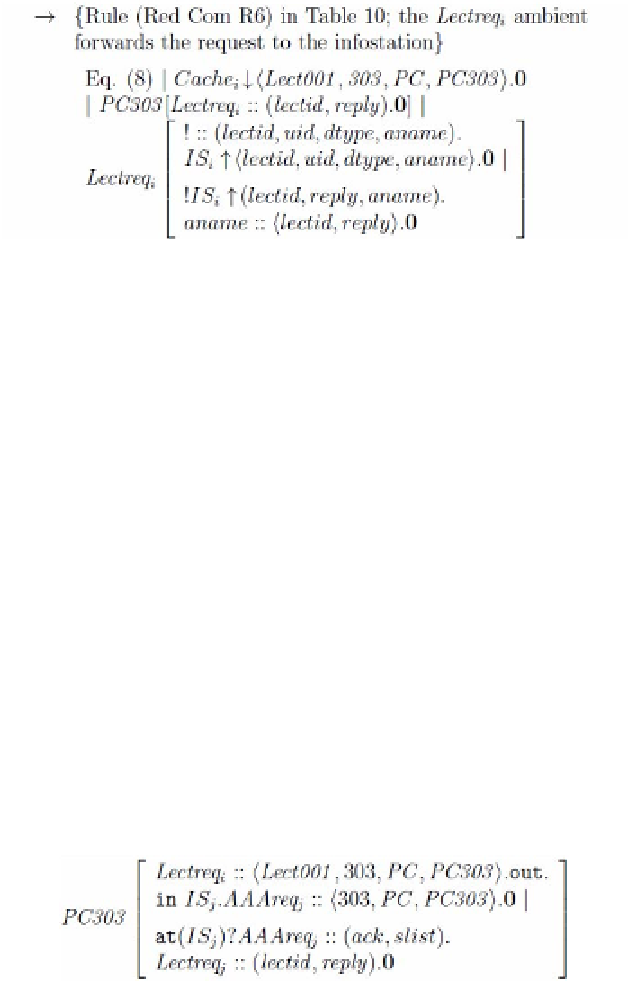Information Technology Reference
In-Depth Information
At this stage, the infostation
has received a lecture request from the
ambient and is
willing to check with the
ℎ
ambient whether it has the requested lecture for the specified
type of device. The behaviour of the
ℎ
ambient is specified by the process
in Eq. (6). If
the requested lecture
Lect001
exists in the cache for the specified type of device, then the
ℎ
ambient gets a copy of the lecture for the specified type of device by interacting with
the child ambient named
Lect001
whose behaviour is specified by the process
as in Eq.
(7). It can also be seen from Eq. (6) and Eq. (7) that if the requested lecture
Lect001
does not
exist in the cache for the specified type of device, then a reply message 'NULL' is forwarded to
the infostation
. So in either situation, the infostation
receives a reply from the cache.
Once a reply is received from the
ℎ
ambient, the infostation
contacts the infostation
centre
ISC
as specified by the process in Eq. (9). How the
ISC
reacts is modelled by Eq. (14); it
replies with a 'DENIED' message if the user requesting the lecture is currently using a mTest
service, otherwise it replies with a 'OK' message and possibly a copy of the requested lecture if
it is not available locally in
's cache. How each of these types of reply is handled by the
is
modelled by the component
C
and
N
in Eq. (9). One can see that for every case where the user
is still in the range of the infostation
(i.e. the context expression 'has(
aname
)' holds), the
infostation
sends a reply to the
ambient which subsequently forwards the reply to
the user device as specified in Eq. (4). This completes the proof of Case 1.
The proof of Case 2 can be done in a similar manner as in Case 1, with the user behaviours
specified as in Eq. (16), where
≠
, i.e. the request is sent from one infostation and the reply
to that request is received after the user has moved to a different infostation.
(7)
This ambient sends a lecture request from the infostation
, moves to a different infostation
, registers with this infostation by sending an AAA request then waits for the
acknowledgement of its registration. Once its registration has been confirmed, it then
prompts to receive the reply to the lecture request and then terminates.
8. Acknowledgment
The authors wish to acknowledge the support of the National Science Fund (Research
Project Ref. No. DO02-149/2008) and the Science Fund of the University of Plovdiv "Paisij
Hilendarski" (Research Project Ref. No. NI11-FMI-004).


